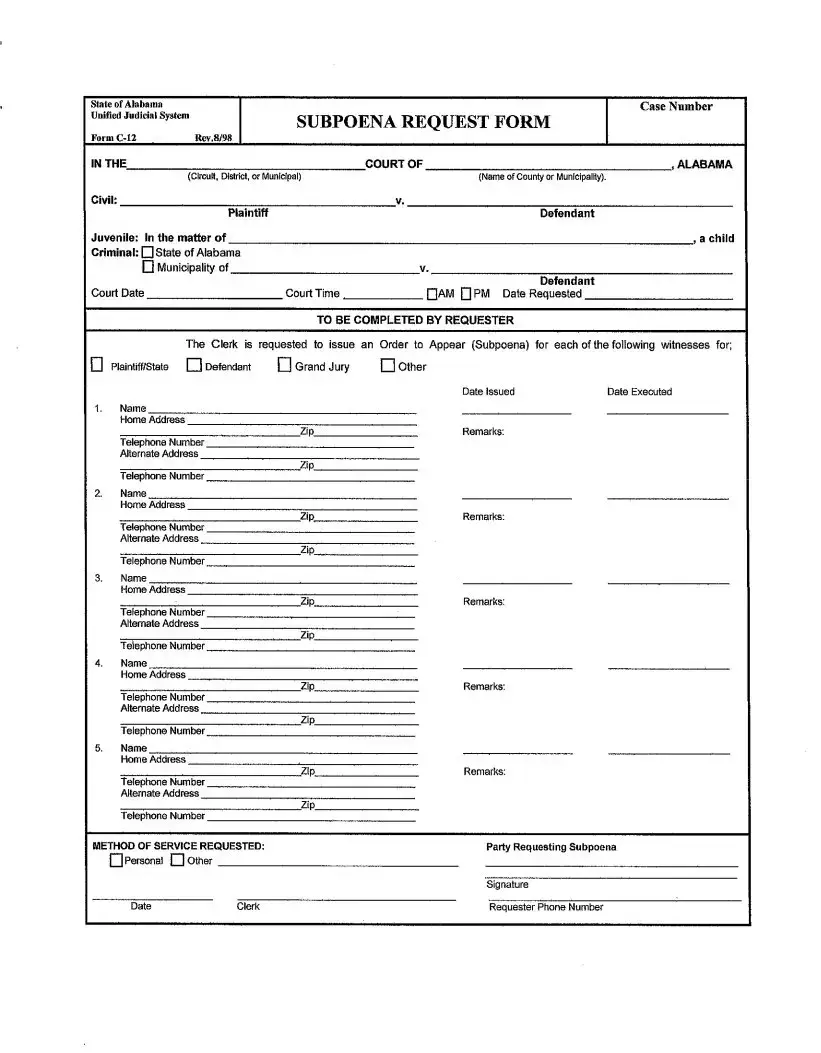What is the Alabama C-12 form used for?
The Alabama C-12 form is a document used in workers' compensation cases. It is officially called the "Employer's First Report of Injury or Occupational Disease." Employers must complete this form when an employee sustains a work-related injury or is diagnosed with an occupational disease. It serves to notify the state's Workers' Compensation Division and the employer's insurance carrier about the incident.
Who is responsible for filling out the C-12 form?
The employer, through a designated representative such as a human resources manager or a supervisor, is responsible for completing the C-12 form. It is crucial that the information provided is accurate and detailed to ensure proper handling of the worker's compensation claim.
When should the C-12 form be submitted?
The C-12 form should be submitted as soon as possible after the injury or diagnosis of an occupational disease. Alabama law requires that this form is filed within 15 days of the incident. Delay in submission can lead to penalties and complications in the workers' compensation claims process.
What information is required on the C-12 form?
The form requires detailed information about the employee, the employer, the incident, and any witnesses. This includes the employee's personal information, the date, time, and place of the incident, a description of the injury or disease, and the name of the treating physician or facility, if available.
How is the C-12 form submitted?
The C-12 form can be submitted electronically or by mail. The preferred submission method varies by the insurance carrier and the specific requirements of the Alabama Workers' Compensation Division. It's important to check with the insurance provider or the Workers' Compensation Division for the preferred method of submission.
What happens after the C-12 form is submitted?
Once the C-12 form is submitted, it is reviewed by both the employer's insurance carrier and the Alabama Workers' Compensation Division. The review process involves verifying the information provided, assessing the injury or illness, and determining the benefits the employee is entitled to under the workers' compensation laws.
Can the C-12 form be amended after submission?
Yes, if there is a need to correct or update information on the C-12 form after it has been submitted, the employer can amend the form. This is important to ensure all information related to the claim is accurate and up to date. Typically, the employer should contact the insurance carrier or the Workers' Compensation Division to make amendments.
Where can I find more information about the C-12 form and workers' compensation in Alabama?
For more information about the C-12 form and workers' compensation processes in Alabama, employers and employees can visit the Alabama Department of Labor's website or contact the Workers' Compensation Division directly. The website provides resources, forms, and contact information that can help in navigating the workers' compensation system.
